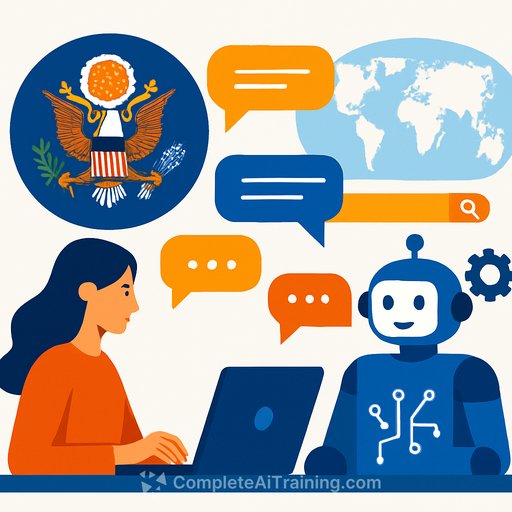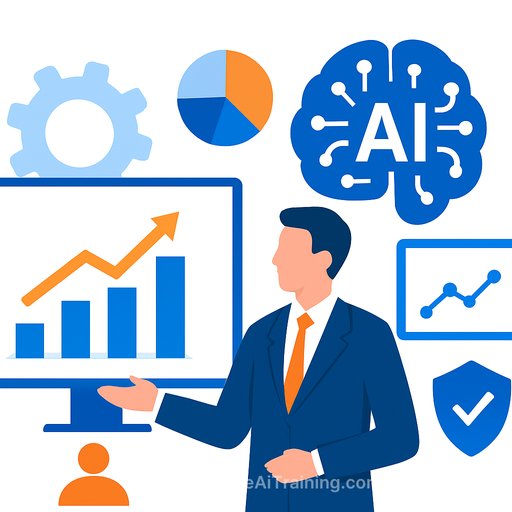State Department Releases 2026 AI Strategy to Equip Diplomats With New Tools
The Department of State has released its Enterprise Data and Artificial Intelligence Strategy for 2026. The plan centers on two goals: upgrading statecraft with AI and accelerating adoption across operations. For executives, this signals a shift from pilots to production-scale AI in a high-stakes environment.
Advancing AI-Driven Statecraft
Diplomats will gain access to AI.State, a centralized hub for models, datasets, and playbooks, and StateChat, the department's first generative AI chatbot for drafting, summarization, and knowledge retrieval. The department plans to stand up secure, flexible infrastructure that supports model training, evaluation, and deployment with oversight. Cross-agency collaboration is a priority to speed shared capabilities and reduce duplication. Workforce development is built in to keep skills current as tools and threats change.
Data Infrastructure That Can Support Real Decisions
The strategy prioritizes broader access to operational data with clear permissions and logging. Autonomous AI systems are slated to take on administrative workloads, support emergency response, and assist with oversight of foreign assistance. Investment coordination aims to cut redundant spend, while risk processes will enable safe experimentation without slowing delivery. Expect stronger model governance and audit paths across the AI lifecycle.
Leader Intent
"Winning the AI race is nonnegotiable," said Secretary of State Marco Rubio. "America must continue to be the dominant force in artificial intelligence to promote prosperity and protect our economic and national security," added the 2025 Wash100 Award winner. "With the launch of our combined Enterprise Data and AI Strategy, we are poised to unlock a new era of diplomatic innovation," stated Deputy Secretary of State for Management and Resources Michael Rigas.
Why This Matters for Executives
- Operating model: Centralized AI services (AI.State, StateChat) indicate a platform approach with shared guardrails and reusable components.
- Data advantage: Broader access and standardization enable faster decisions and lower cycle times across missions.
- Governance: Built-in risk, auditability, and human oversight will be as important as model performance.
- Talent: Upskilling diplomats and analysts is core to adoption, not an afterthought.
- Resilience: Emergency response and oversight use cases show a move to AI that supports time-critical work.
Key Metrics to Track
- Time-to-decision reduction in field and HQ workflows
- Adoption and satisfaction of AI.State and StateChat by mission area
- Model reliability: false positive/negative rates, drift, and downtime
- Audit readiness: traceability of data, prompts, versions, and outputs
- Workforce capability: percentage of roles with verified AI proficiency
- Cost-to-serve per use case vs. baseline operations
Practical Next Steps for Leaders
- Stand up a central AI catalog and intake process with clear ownership and SLAs.
- Prioritize use cases with measurable impact: briefings, translation, threat triage, grant oversight, crisis routing.
- Implement a risk playbook mapped to an external standard, such as the NIST AI Risk Management Framework.
- Create data product owners for high-value datasets; enforce lineage, quality checks, and access tiers.
- Launch limited-scope pilots with human-in-the-loop, then scale behind a shared platform and monitoring stack.
Resources
- U.S. Department of State: Artificial Intelligence initiatives and policy overview - state.gov/artificial-intelligence
- Building AI fluency by job function - Complete AI Training
Your membership also unlocks:






